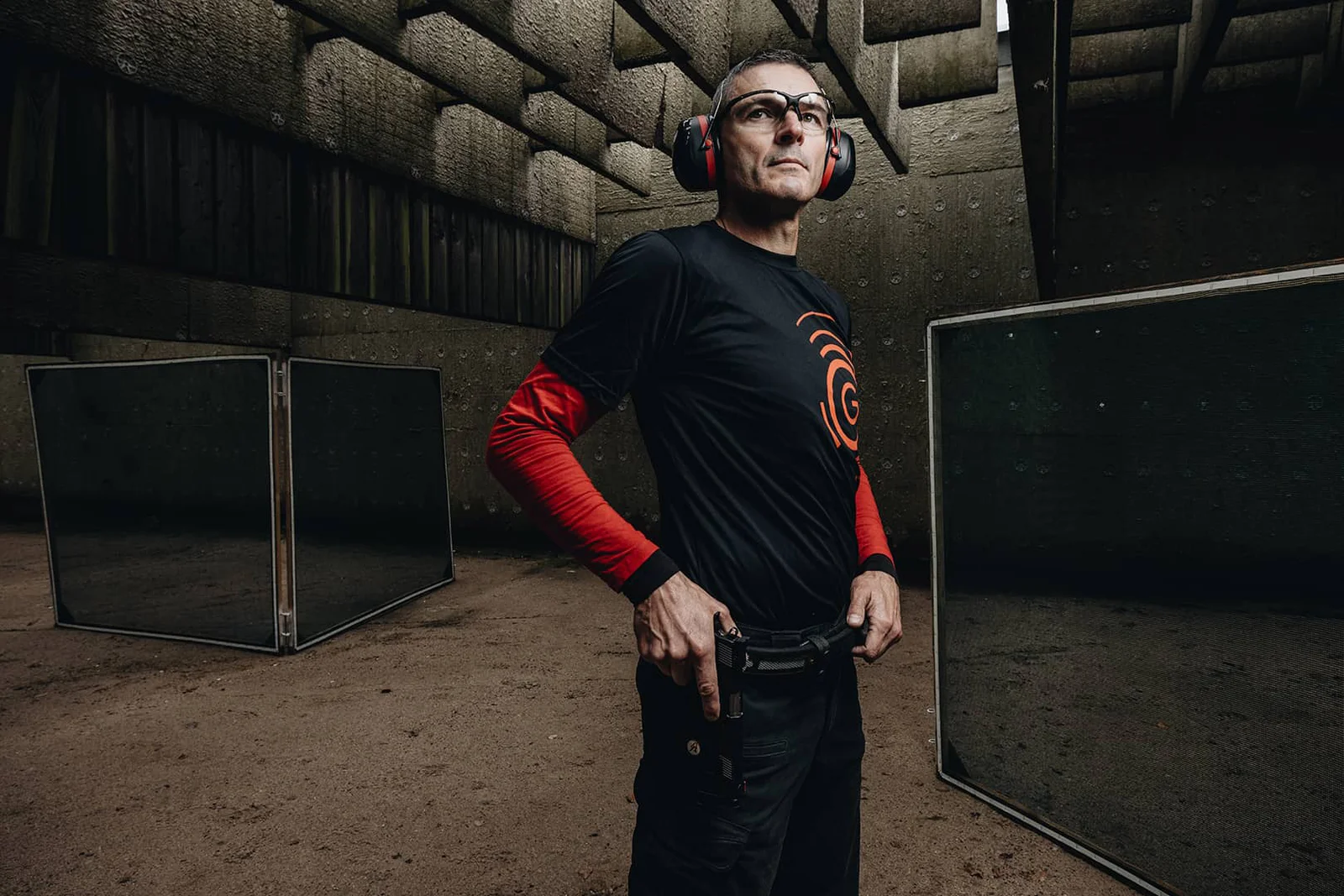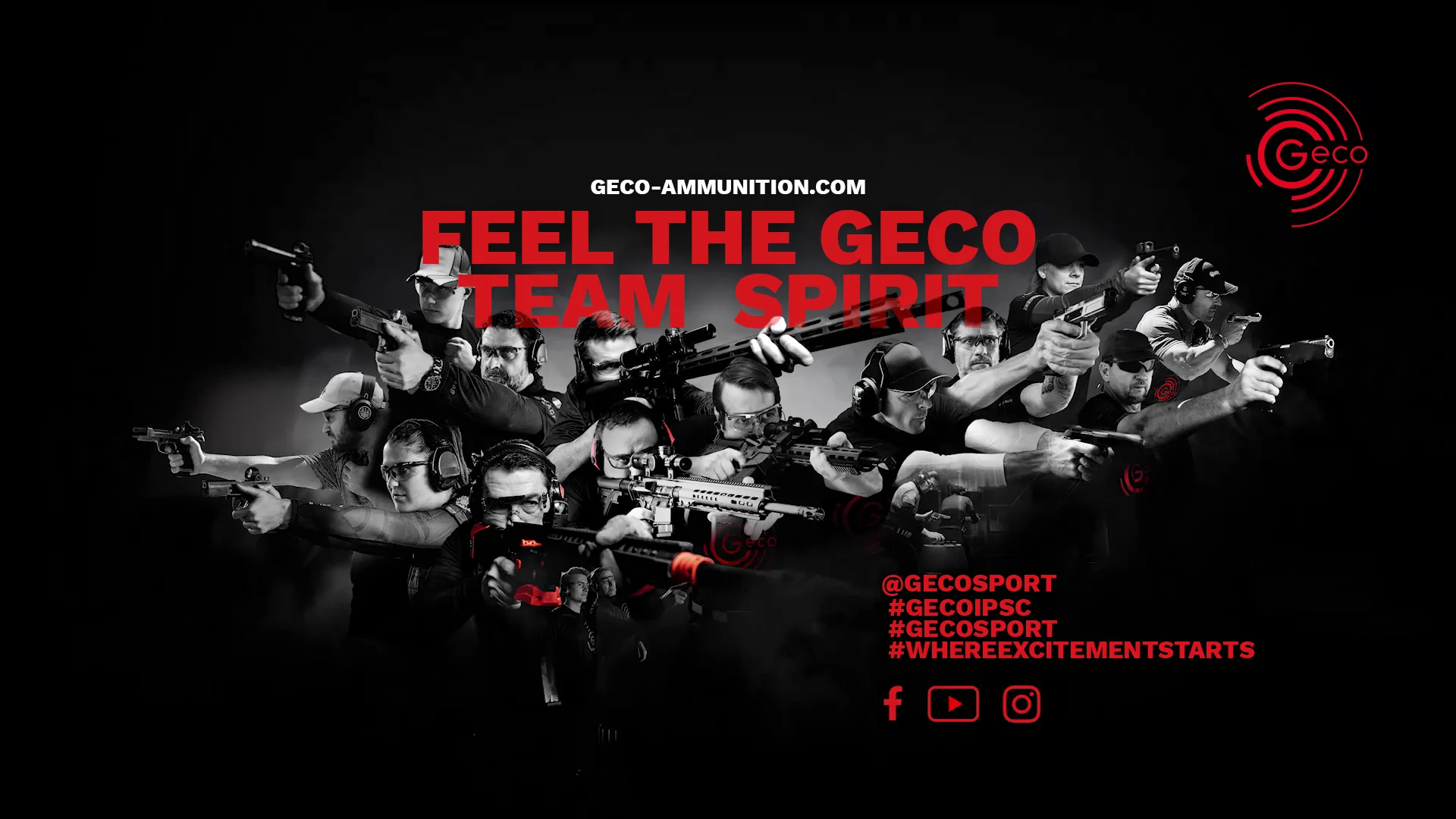
SHOOTING PORTRAIT:
György Batki

GECO IPSC Team Shooter
György Batki, Hungary
Born on 7 February 1974, the police officer works as a tactics and firearms instructor at the Heves County Police Headquarters. The ambitious martial artist also took up sports shooting in 1995 while still serving as a member of a special police unit, and from 2000 onwards devoted himself especially to dynamic IPSC shooting.
Aside from winning around 50 international Level III tournaments in Standard Division, Batki’s biggest achievements include his 3rd place at the 2010 IPSC European Championship and the 5th spot at the World Championship in 2011. The 13-time Hungarian champion in the IPSC Standard Division is also among the top seeds in police competitions, and Batki can be proud of his 14 titles in national competitions in Hungary.
His international accomplishments include first place at the USIP World Police Games (Hungary 2015), as well as second (Abu Dhabi 2017) and third places (Italy 2019). The muscular athlete uses a German Sport Target Pistol (STP) 2011 by Prommersberger as his match firearm, accompanied by GECO .40 Smith & Wesson ammunition and Double Alpha Race Master holster equipment.

Quick-fire interview with György Batki – 10 questions, 10 answers:
1. What introduced you to sport shooting?
Well, like almost every little boy I was always fascinated with guns, so the transition from toys to actual tools of my profession and leisure pursuits was pretty much inevitable.
2. When did you start?
I didn’t really get stuck into sport shooting until 1995, when I was 21. Five years later I started focusing on dynamic IPSC shooting.
3. What was the very first gun you owned?
My first gun was my duty pistol, an IMI Jericho 941F. The first match pistol I owned was a CZ 75 ST in .40 S&W.
4. What have been your biggest successes?
Clearly, the third-place podium finish, so winning the bronze medal at the 2010 European IPSC Championships, also 5th place at the World Championship in Standard Division.
5. Can you describe a typical day of practice?
Well, as a police shooting instructor I work at the range every day. Fortunately, I have some time for my own practice once the work is done, so I can practice for around 1.5 to 2 hours per day. I split the sessions into units involving static and dynamic shooting, as well as exercises with maximum movement. Usually I will shoot with my IPSC Standard pistol, but have practised for some time with a rifle and a pistol carbine (PCC).
6. How much ammunition do you use up each year for practice and competitions?
I shoot roughly 300 practice rounds per day. I have used GECO factory ammunition for 20 years. Mostly I shoot the .40 S&W with 180 grains and 200 grains FMJ, also GECO with 124 grains full metal jacket in 9mm Luger, GECO with 55 grains FMJ in .223 Remington, and GECO rimfire ammunition with 40 grains semi-auto in .22 Long Rifle. For other types of weapons I also use GECO with 124 grains FMJ in 7.62x39, GECO with 158 grains FMJ-FN in .357 Magnum and GECO with 148 grains WC in .38 Special, although in far smaller quantities. In total, I almost certainly shoot over 100,000 rounds each year.
7. Which firearms are you currently using?
I started with my CZ 75 ST, switched to the CZ 75 TS Orange, then shot an STI 2011 Apeiro, STI 2011 Edge, BUL SAS II, and now I use an STP by the German master gunsmith Karl Prommersberger. Naturally, all of the pistols are configured for Standard Division in the major calibre .40 S&W.
8. What aspects of the ammunition really matter to you?
As I said, I have been using GECO ammunition for 20 years and receive a lot of support from the RUAG Ammotec plant in Hungary. Typical attributes that make me choose GECO are the accuracy, the power factor of the ammunition and its special modification for the IPSC weapon classes, the premium materials in the unfailingly high-quality manufacturing, identical cartridge dimensions and absolute functional reliability.
9. Do you wind down with other sports/hobbies aside from sport shooting?
I enjoy martial arts, jog and am a keen DIY enthusiast.
10. What advice would you give to a novice shooter?
I would advise them to take lessons from a professional shooting instructor with a knack for teaching the basics of dynamic shooting. At least 20 to 25 lessons would be a good number. Novices should not regret the cost and time this takes, as it will point them in the right direction and build a solid foundation right from the start – without wasting time on pointless practice or ultimately just “destroying ammunition”.
Thank you, György!






